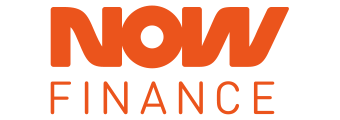
You may have seen an advertisement, or been spammed by an email by one of the myriad credit score websites. All of these credit reporting agencies ask the same question: "Do you know your credit rating?"
If you have thus far dismissed these ads and agencies as irrelevant, you may want to rethink your approach, especially if you are on the hunt for the best home loan, require a personal loan, or are applying for a credit card.
Why Your Credit Report Matters
Your credit score is a number, yet your credit report is the detail that lies beneath. Whether you’re applying for a home loan, a personal loan, a credit card, or even a rental property, lenders look closely at your credit report before making a decision.
Today, lenders have access to a fuller picture of your credit history, and it’s called comprehensive credit reporting or CCR. It captures not just bad credit behaviour but good ones too. This expanded insight means accessing credit can be more democratic than just numbers on a page, i.e. your credit score.
Here’s why your credit report matters:
-
Lenders use your credit score and report to assess your risk as a borrower. A stronger score increases your chances of approval.
-
A good credit report can unlock lower interest rates, which could save you thousands over the life of a loan.
-
With credit reporting, lenders can see positive behaviours, like paying on time and reducing your debts, which can work in your favour.
-
Your credit score may be checked when applying for different applications, from mortgages to mobile phone plans.
-
Thanks to CCR, your report includes information like your repayment history, account limits, and types of credit, giving lenders a much clearer view of your financial reliability.
-
CCR also captures other credit items like a postpaid phone plan, energy bills and other household costs that aren’t directly financial products.
In short, your credit score is no longer just about past mistakes. It’s also about how you manage your money today. And with CCR in play, that story is more detailed than ever before.
What is Comprehensive Credit Reporting?
If we are talking popular culture trivia night questions, CCR would be a reference to Creedence Clearwater Revival.
However, in the world of financial reporting, Comprehensive Credit Reporting, otherwise known as CCR, is no trivial matter. It is, in fact, an important cog in Australia's credit reporting system.
CCR allows for information, positive and negative, to be securely supplied between credit providers and credit reporting bodies and helps lenders recognise sound credit management behaviour.
Overall, the implementation of CCR has improved responsible lending requirements and borrowing practices. It effectively rewards people for having a good credit history, not penalising them for missing the odd repayment.
CCR - a brief history
CCR was first introduced in March 2014 as a voluntary scheme designed to elicit better credit reporting by lending specialists, most notably banks.
Prior to this, Australia operated under a "negative" credit reporting environment, whereby credit agencies such as Equifax, illion or Experian only recorded negative data such as the date a credit account is opened, current limit on credit accounts, the nature of the credit account, the date a credit account is closed, monthly repayment history for 24 months and default listing.
On 2 November 2017, then Federal Treasurer Scott Morrison mandated participation in Comprehensive Credit Reporting for the Big Four banks, forcing the banks to share 50% of a customer's credit data with credit bureaux, including positive data. This is now 100%.
Morrison said at the time:
This will be a game-changer for both consumers and lenders, and will lead to greater competition in lending and naturally provide better access to finance for Australian households and small businesses.
For borrowers, this regime should lead to one thing - a better deal on your mortgage, your personal loan or business loan.
If you have a good credit history - you're paying down your mortgage, you haven't missed a payment on your car loan and your credit cards are under control - you will be able to demand a better deal on your interest rates, or shop around, armed with your data.
How have banks responded to CCR?
With data seen as an asset and a way to influence consumers, banks were somewhat slow on the uptake of comprehensive credit reporting. Some banks didn't want to give this 'asset' up, lest competitors use the data to try to win over rival customers.
In other words, it would impact competitiveness. Banks initially saw it as yet another regulatory hurdle, given the amount of time dedicated to reporting all information. Banks had built their systems to meet the requirements of the 'negative reporting' credit system, which up until recently was the minimum reporting requirement. The change to 'positive reporting' meant systems and processes had to change.
Further changes came into effect on 1 July 2019, with the banks required to share 100% of credit data up from 50%.
Is CCR good or bad?
In previous iterations of credit reporting, your credit file would only illustrate bad behaviour such as payment defaults or bankruptcy. This has now changed to include positive behaviour such as paying bills on time, paying off your credit card early (repayment history), credit limits, account open and close dates or shutting down the card altogether.
That behaviour works in your favour when lenders consider handing out loans.
It is really only unfavourable if you have multiple debts that you are struggling to pay off, or have failed to be approved for multiple credit cards, for example
The good news is that credit history falls off over a period of time and you can reset.
This table highlights the key changes brought by CCR compared to the traditional credit reporting system:
|
Aspect |
Before CCR (Traditional Credit Reporting) |
After CCR |
|---|---|---|
|
Type of Information Reported |
Mostly negative data: defaults, late payments, bankruptcies |
Both negative and positive data: timely bill and debt payments, credit limits, account types, balances, and repayment history |
|
Credit Score Impact |
Based largely on negative events and defaults |
More balanced, reflecting overall financial behaviour including positive habits |
|
Loan Approval Decisions |
Based on limited, mostly negative info, sometimes leading to conservative lending |
More informed decisions based on a fuller financial profile, potentially improving access to credit |
|
Interest Rates |
Primarily influenced by negative marks |
Can be influenced positively by consistent good repayment behaviour |
|
Consumer Visibility |
Consumers are often unaware or unable to see positive info affecting their score |
Consumers get a clearer, more detailed report, improving financial literacy and control |
|
Risk Assessment |
Focused heavily on risk from negative records |
Holistic risk assessment with data on both risk and responsible credit use |
|
Dispute and Correction |
Focus on correcting negative errors |
Encourages consumers to track and maintain positive behaviours, easier dispute of inaccuracies |
What to expect on your credit report
With all positive behaviour now to be reported, that can only mean better outcomes for those looking for a home loan or credit card.
Here's what you will see on your comprehensive report:
-
Credit inquiry information
-
Credit type application
-
Credit amount application
-
Open dates
-
Close dates
-
Types of accounts opened
-
Maximum credit amounts
-
New and previous credit amounts
-
Repayment conditions
-
Credit providers (licenced and unlicenced)
-
Overdue amounts
-
Monthly repayments for the last two years
-
Default agreement details
-
Commercial credit applications
-
Overdue commercial credit account details
-
Postpaid phone plans
-
Energy bills
-
A positive reaction to long-term tenures in one residential address
How to ensure a positive credit report
One of the determining factors in an Australian home loan application is your credit score, a number generated by a credit reporting body that is a summary of the information on your credit report.
The higher the score, the better your credit history is, but with more information now readily available, your credit score could change on a regular basis as CCR adds additional information to credit reporting bodies each month.
Keeping your credit score strong
Consider these steps:
-
Keep an eye on your credit score; it's free, and you can check it at any time with many outlets.
-
Check your credit report for free with Illion, Experian or Equifax. Report any errors, fraud or erroneous entries impacting your score.
-
Only apply for loans you need and can afford to pay back. You can use these calculators to determine your borrowing power and refinancing limits.
-
Pay things on time. This budget planner will help you pay your bills in a timely fashion and without the stress of not knowing where your money is going.
-
Set up direct debits.
-
Only apply for credit when you really need it, and if you do apply, know what the repayments will be before you sign on the dotted line and find out how quickly you can pay it off through extra repayments. This Credit Card Repayment Calculator can give you peace of mind.
If you see any anomalies on your credit card statement, report them immediately. In other words, don't get fleeced or fall victim to fraud.
Unlocking better loan rates with a good credit score
Looking to borrow? Below is a comparison of personal loan interest rates from several banks, highlighting the competitive offers you could qualify for with a strong credit score under Comprehensive Credit Reporting.
| Lender | Car Loan | Interest Rate | Comparison Rate* | Monthly Repayment | Interest Type | Secured Type | Early Exit Fee | Ongoing Fee | Upfront Fee | Total Repayment | Early Repayment | Instant Approval | Online Application | Tags | Features | Link | Compare | Promoted Product | Disclosure |
|---|---|---|---|---|---|---|---|---|---|---|---|---|---|---|---|---|---|---|---|
5.76% p.a. | 5.76% p.a. | $384 | Fixed | Unsecured | $0 | $0 | $275 | $23,066 |
| Promoted | Disclosure | ||||||||
5.95% p.a. | 5.95% p.a. | $386 | Fixed | Unsecured | $0 | $0 | $0 | $23,171 |
| Promoted | Disclosure | ||||||||
5.95% p.a. | 5.95% p.a. | $386 | Fixed | Unsecured | $0 | $0 | $0 | $23,171 |
| Promoted | Disclosure |


